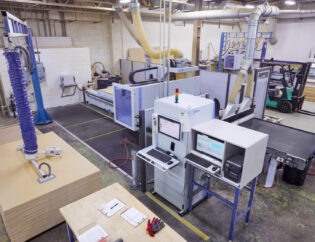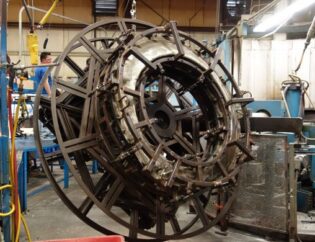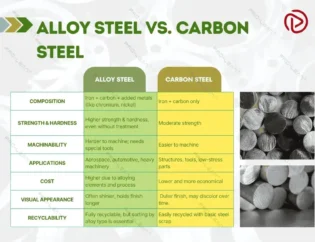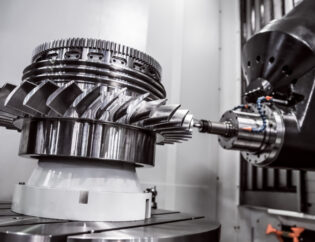In the world of precision manufacturing, the 6-axis CNC mill stands out as a revolutionary tool that enhances productivity and accuracy. This advanced machinery allows for complex geometries and intricate designs, making it essential for industries ranging from aerospace to automotive. Understanding its capabilities can significantly impact production efficiency and product quality.
This guide will delve into the fundamental principles of 6-axis CNC milling, exploring its mechanics, programming techniques, and operational best practices. Readers will gain insights into how to optimize workflows and reduce production times while maintaining high standards of precision.
Additionally, we will cover common challenges faced by operators and provide practical solutions to overcome them. By the end of this guide, readers will be equipped with the knowledge to effectively utilize a 6-axis CNC mill, enhancing their skills and contributing to their organization’s success.
6 Axis CNC: The Complete Guide
A 6 axis CNC machine is a type of CNC machine that can move and rotate its cutting tool or workpiece in six different directions. It can perform complex and precise operations that are impossible or difficult with conventional CNC machines. This guide will explore the features, advantages, applications, and types of 6 axis CNC machines, providing a comprehensive understanding of this advanced technology.
Key Features of 6 Axis CNC Machines
6 axis CNC machines offer several technical features that enhance their capabilities. Below is a comparison table highlighting the key features of 6 axis CNC machines:
| Feature | Description |
|---|---|
| Axes of Movement | 6 axes: X, Y, Z (linear) and A, B, C (rotational) |
| Precision | High precision machining for complex shapes and intricate designs |
| Speed | Faster production times compared to 3, 4, and 5 axis machines |
| Flexibility | Ability to work on multiple sides of a workpiece without repositioning |
| Software Requirements | Advanced software for programming and operation |
| Applications | Used in aerospace, automotive, medical, military, and artistic industries |
Advantages of 6 Axis CNC Machines
The advantages of 6 axis CNC machines over their 3, 4, and 5 axis counterparts are significant. They include:
– Higher Accuracy: The additional axes allow for more precise machining, making it ideal for complex parts.
– Reduced Setup Time: Fewer fixtures are needed, which saves time and reduces the potential for errors.
– Increased Production Speed: The ability to machine multiple sides simultaneously leads to faster production cycles.
– Versatility: Capable of handling a wide range of materials and applications, from intricate designs to large components.
Applications of 6 Axis CNC Machines
6 axis CNC machines are utilized across various industries due to their advanced capabilities. Some common applications include:
– Aerospace: Manufacturing complex parts like turbine blades and structural components.
– Automotive: Producing engine blocks, molds, and other intricate parts.
– Medical: Creating surgical implants and prosthetics with high precision.
– Military: Machining components for weapons and defense systems.
– Art: Crafting sculptures and artistic designs with intricate details.
Types of 6 Axis CNC Machines
Different types of 6 axis CNC machines cater to various manufacturing needs. Below is a comparison table of the types of 6 axis CNC machines:
| Type | Description |
|---|---|
| 6 Axis CNC Mill | Primarily used for milling operations, capable of high-speed machining |
| 6 Axis CNC Router | Designed for cutting and shaping materials like wood, plastic, and metal |
| 6 Axis CNC Lathe | Used for turning operations, ideal for cylindrical parts |
| 6 Axis Machining Center | Combines milling and turning capabilities for complex part production |
| 6 Axis Robotic Arm | Flexible and programmable for various tasks, including assembly and welding |
Technical Challenges and Considerations
While 6 axis CNC machines offer numerous benefits, they also come with challenges:
– Cost: Higher initial investment compared to simpler machines.
– Complexity: Requires skilled operators and advanced programming knowledge.
– Maintenance: More complex systems may require more frequent maintenance and specialized parts.
Conclusion
6 axis CNC machines represent a significant advancement in machining technology, offering unparalleled precision, speed, and versatility. Industries such as aerospace, automotive, and medical are increasingly adopting these machines to meet the demands of complex part production. As technology continues to evolve, the use of 6 axis CNC machines is expected to grow, providing manufacturers with the tools they need to stay competitive.
FAQs
1. What is a 6 axis CNC machine?
A 6 axis CNC machine is a type of CNC machine that can move and rotate its cutting tool or workpiece in six different directions, allowing for complex and precise machining operations.
2. What are the advantages of using a 6 axis CNC machine?
The advantages include higher accuracy, reduced setup time, increased production speed, and versatility in handling various materials and applications.
3. In which industries are 6 axis CNC machines commonly used?
They are commonly used in aerospace, automotive, medical, military, and artistic industries for producing complex and high-precision parts.
4. How do 6 axis CNC machines differ from 3 and 5 axis machines?
6 axis machines have additional rotational axes, allowing for more complex machining operations compared to 3 and 5 axis machines, which are limited in their movement capabilities.
5. What are the challenges associated with 6 axis CNC machines?
Challenges include higher costs, complexity in operation and programming, and the need for more frequent maintenance compared to simpler CNC machines.










